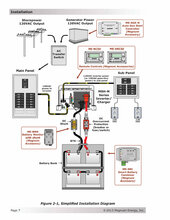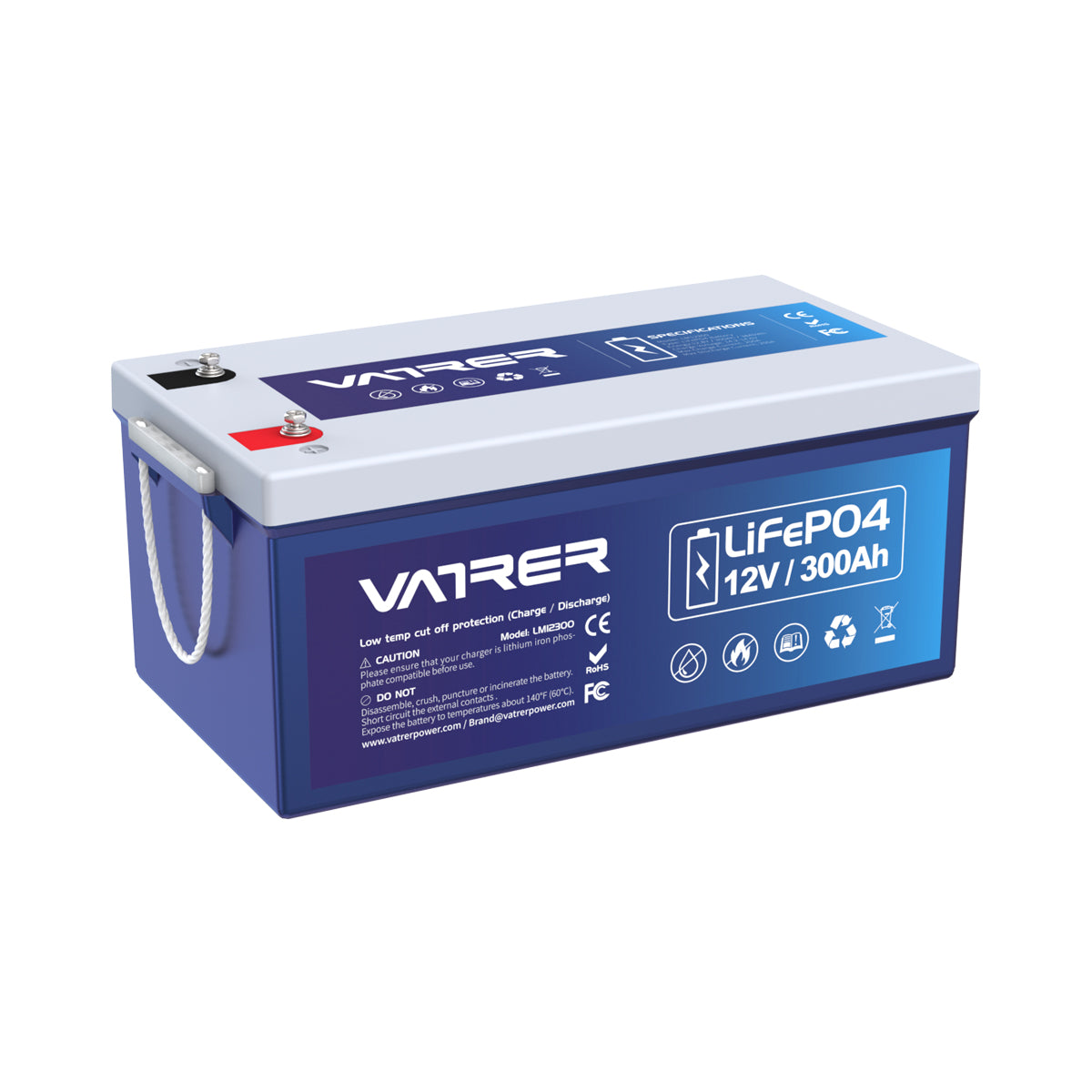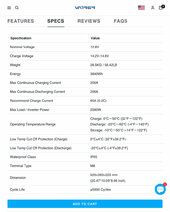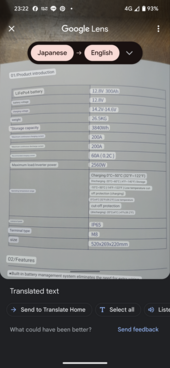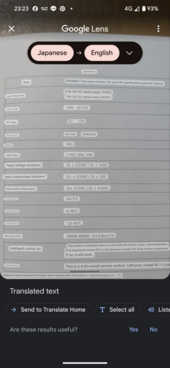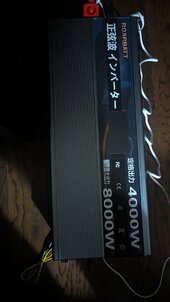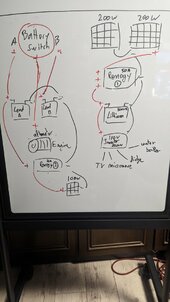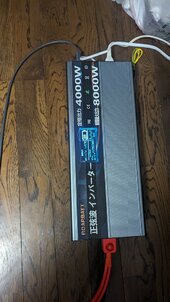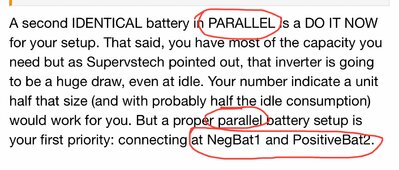Notice the voltage drop indicated on your inverter.
Roughly 3000W draw, and your battery is reading 0% voltage.
12V inverters have a HUGE draw on the batteries.
I would get a second ASAP. That will lower the voltage drop from the load.
Also, most inverters are draining a hefty wattage just from being on.
It will not take long to deplete your battery under way.
120vac Fridge ( inexpensive )
VS
12vdc Fridge ( expensive )
@solidseb
At my 100% Off Grid Cabin which is almost 100% Solar Powered ( gasoline generator if runs of crappy weather ) & I am north of the 49 Parallel, I have a 12vdc ARB Fridge. It uses typically 250Wh per day. Very efficient.
My point is this in regards to your system; If I understand it correctly you would need to keep your inverter on 24/7 for your fridge. If you get an efficient 12vdc fridge, then the wasted energy running the inverter would be reduced to approximately 1.5 hours to 2.5 hours ,,, not 24 hours.
Say an inverter is 20W standby energy @ 24 hours that is 480Wh. Almost twice the energy of my fridge.

************
So at my Cabin I have yet to install a Victron 12|3000|120. I pondered getting an inexpensive 120vac fridge. My quandary is, I will be doubling my energy use of my current fridge on inverter standby alone. The other issue is the heat and possibly noise that the inverter will introduce inside my small cabin.
Decisions Decisions
If I were to start over, I would consider 24vdc or even 48vdc. My 12vdc is centralized, so the wire runs are fairly short. I have pre wired 120vac before closing up the walls ,,, so it is there.
I will probably be installing that Victron Inverter & keep the 12vdc fridge so I can keep the inverter off when not needed.
I originally setup this system for efficiency, but these systems tend to gain weight over the years.
Currently my Cabin use is about 500Wh to 750Wh per day. Here is a screenshot I took just now, but day 3 & 4 are actually late October 2023 when I disabled the system for winter storage;
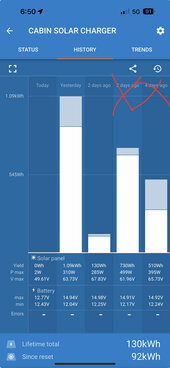
Yesterday’s weather was sun, cloud, & a little rain, still peaked 310W out of 3-100W in series ( 60V @ 5A). I only have 1/2 my 600W array hooked up.
There is a lot of data displayed on these graphs. Very helpful to assist in diagnosis if there is ever a problem, or if tweaking for performance.



